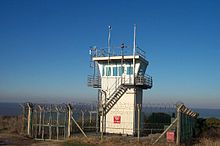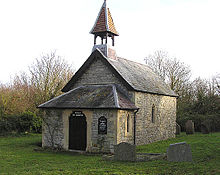| Revision as of 02:11, 3 September 2017 editKolbertBot (talk | contribs)Bots1,166,042 editsm Bot: HTTP→HTTPS← Previous edit | Revision as of 02:22, 21 October 2017 edit undo174.6.176.103 (talk) Fixed typo, Fixed grammarTags: Mobile edit Mobile app editNext edit → | ||
| Line 16: | Line 16: | ||
| |os_grid_reference= ST173449 | |os_grid_reference= ST173449 | ||
| }} | }} | ||
| '''Lilstock''' is a ] in the ] of ] within the ] district of ], England. It is {{convert|12|mi|km|0}} north-west of ], and {{convert|8|mi|km|0}} north-east of ]. It on the coast of ] on the ], near the ] nuclear power stations. | '''Lilstock''' is a ] in the ] of ] within the ] district of ], England. It is {{convert|12|mi|km|0}} north-west of ], and {{convert|8|mi|km|0}} north-east of ]. It is on the coast of ] on the ], near the ] nuclear power stations. | ||
| ==History== | ==History== | ||
Revision as of 02:22, 21 October 2017
Human settlement in England
Lilstock is a hamlet in the civil parish of Stringston within the West Somerset district of Somerset, England. It is 12 miles (19 km) north-west of Bridgwater, and 8 miles (13 km) north-east of Williton. It is on the coast of Bridgwater Bay on the Bristol Channel, near the Hinkley Point nuclear power stations.
History
It was recorded as Lytel-Stoke or Lulestock in the Domesday book, and rendered at one time as Little Stock or Little-stoke. Its name is said to have meant "the stoc of Lylla and his people".
Lilstock was an ancient parish, part of the Williton and Freemanners Hundred.
In 1811 210 acres (0.85 km) of common land were enclosed as part of the Inclosure Acts.
Lilstock became a civil parish in 1866, but in 1886 it was merged with Kilton to form the civil parish of Kilton with Lilstock, itself abolished in 1933 and aborbed into the parish of Stringston.
Coast

The Blue Anchor to Lilstock Coast Site of Special Scientific Interest (SSSI) provides an outstanding series of sections through the Early Jurassic Lower Lias, spanning the Hettangian and Pliensbachian stages and named the "Lilstock Formation". This sequence and the good Rhaetian succession beneath are repeatedly affected by faulting, making it of interest to geologists and fossil hunters. It also displays coastal geomorphology which demonstrates a particularly well-developed series of intertidal shore platforms varying in width from about 200–600 m. The cliff and beach are rich in reptile remains, including complete skeletons. Lilstock also yields ammonites, shells and fish remains. A unique specimen of an ichthyosaur, named Excalibosaurus costini MacGowan, in which the lower jaw is shorter than the upper, was found in the Lower Jurassic Sinemurian Stage, Lower Lias beds on the foreshore at Lilstock and is now in the Bristol City Museum and Art Gallery.
Harbour
Lilstock appears to have been the old port of the Saxon settlement of Stogursey.
The Acland baronets were the lords of the manor. Around 1820 Sir John Acland built a boat house on the beach with a pier and breakwater to form Lilstock harbour. Coal was brought from Wales for domestic use on the Acland estate, and to fire the large limekiln on the cliff. Pit props were the main export along with lime. By 1848 there were resident coastguards, and by 1855 a customs officer. About 1860 a stone pier was built from the north side of the harbour wall. By 1866 warehouses were standing beneath the cliff beside the southern harbour wall. The limestone carrier the Richard was wrecked at Lilstock in 1881. A plan for a ship canal from Seaton in Devon to terminate at Lilstock was considered by the Board of Admiralty in 1888. The harbour was apparently abandoned following damage during a storm on the night of 28/29 December 1900, and the pier finally being destroyed after the First World War.
Gunnery range

The sea off Lilstock has been used as an air gunnery practice range connected to RNAS Yeovilton, and ordinance presumed to date to the Second World War has been found offshore. Lilstock Royal Navy Range served as a practice bombing range for fixed-wing aircraft using inert ordnance until 1995, when it was redesignated as a helicopter gunnery range.
Church

The small Church of St Andrew, with only two rows of pews, features a 14th-century chancel arch. This arch is the only remaining portion of the earlier church which was demolished in 1881 when the present structure was erected. The church was declared redundant in 1980, and the Norman font removed to Stogursey Church in 1981. The church was restored around 1993 but only holds one service a year. The most recent baptism in the church was in 1881 and the most recent wedding was in 1834.
References
- Waite, Vincent (1964). Portrait of the Quantocks. London: Robert Hale. ISBN 0-7091-1158-4.
{{cite book}}: Cite has empty unknown parameter:|coauthors=(help) - "Lilstock, West Somerset". Everything Exmoor. Archived from the original on 4 March 2016. Retrieved 1 January 2008.
{{cite web}}: Unknown parameter|deadurl=ignored (|url-status=suggested) (help) - "Somerset Hundreds". GENUKI. Retrieved 23 October 2011.
- Havinden, Michael (1982). The Somerset Landscape. The making of the English landscape. London: Hodder and Stoughton. p. 133. ISBN 0-340-20116-9.
- R.W. Dunning (editor), A.P. Baggs, R.J.E. Bush, M.C. Siraut (1985). "Parishes: Lilstock". Victoria County History. A History of the County of Somerset: Volume 5. Institute of Historical Research. Retrieved 3 December 2014.
{{cite web}}:|author=has generic name (help)CS1 maint: multiple names: authors list (link) - "Blue Anchor to Lilstock Coast SSSI" (PDF). English Nature. Retrieved 31 December 2007.
- "Collections - Geology - page 7 - Reptiles". Bristol City Museum. Archived from the original on 20 May 2011. Retrieved 31 December 2007.
{{cite web}}: Unknown parameter|deadurl=ignored (|url-status=suggested) (help) - "A brief history of Stogursey". Somerset County Council. Retrieved 31 December 2007.
- ^ Farr, Grahame (1954). Somerset Harbours. London: Christopher Johnson. pp. 117–118.
{{cite book}}: Cite has empty unknown parameter:|coauthors=(help) - ^ "Lilstock harbour". Somerset Historic Environment Record. Retrieved 31 December 2007.
- "Limekiln Complex". Images of England. Retrieved 31 December 2007.
- "Lime kiln and buildings". Somerset Historic Environment Record. Retrieved 31 December 2007.
- Warren, Derrick (2005). Curious Somerset. Stroud: Sutton Publishing. pp. 78–79. ISBN 978-0-7509-4057-3.
- "Second WW2 bomb found in Bristol Channel near Hinkley Point". BBC News. 16 August 2017.
- "Kilve Bend Range". Hansard 29 Mar 2004: Column 1142W—continued. Retrieved 31 December 2007.
- "Church of St. Andrew". Images of England. Retrieved 31 December 2007.
- "West Somerset Parish Register Transcriptions". Archived from the original on 23 October 2007. Retrieved 1 January 2008.
{{cite web}}: Unknown parameter|deadurl=ignored (|url-status=suggested) (help)
External links
![]() Media related to Lilstock at Wikimedia Commons
Media related to Lilstock at Wikimedia Commons

